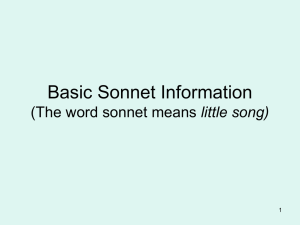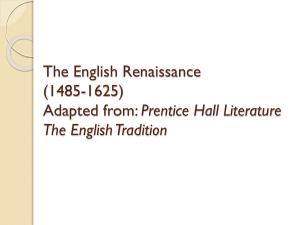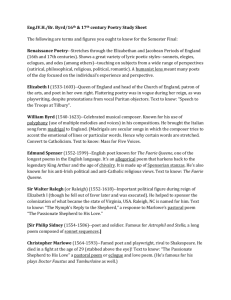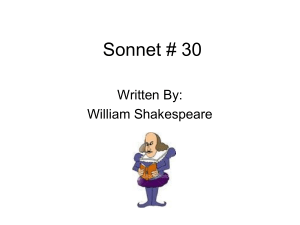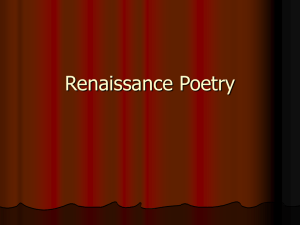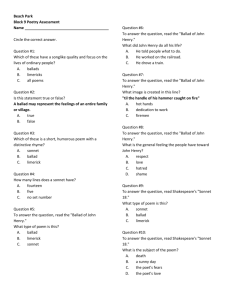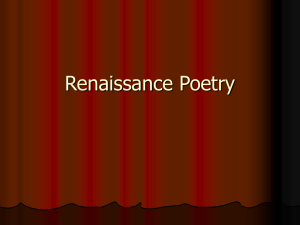Grade 10 Poetry Analysis: Ancestors at Wonderwerk Assessment
advertisement
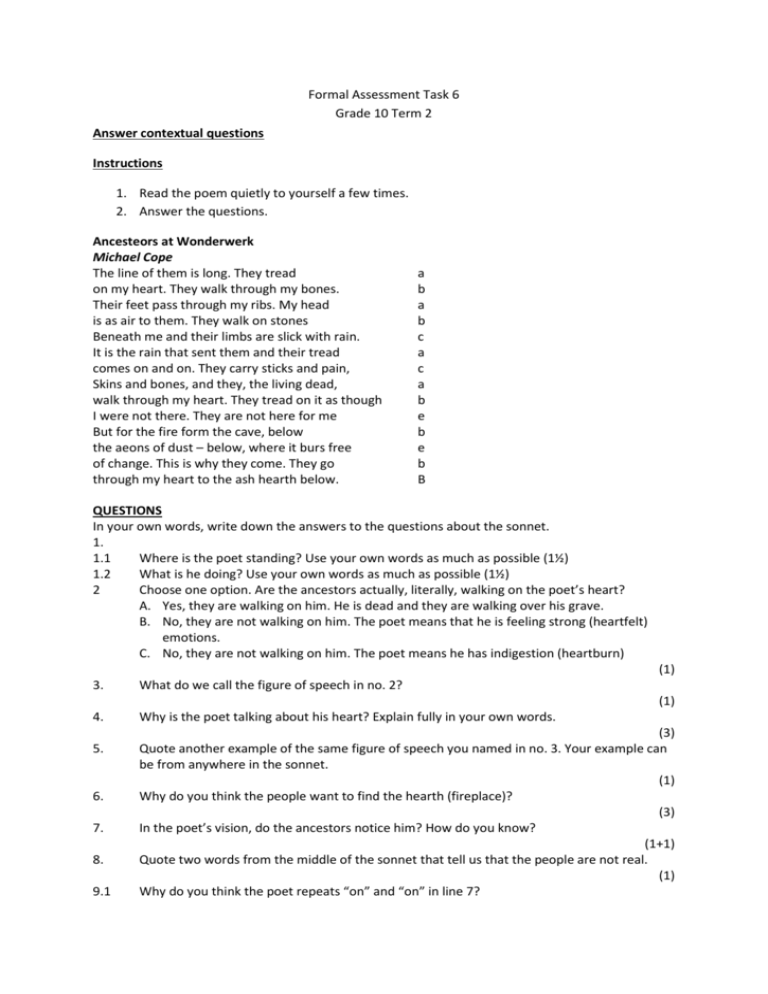
Formal Assessment Task 6 Grade 10 Term 2 Answer contextual questions Instructions 1. Read the poem quietly to yourself a few times. 2. Answer the questions. Ancesteors at Wonderwerk Michael Cope The line of them is long. They tread on my heart. They walk through my bones. Their feet pass through my ribs. My head is as air to them. They walk on stones Beneath me and their limbs are slick with rain. It is the rain that sent them and their tread comes on and on. They carry sticks and pain, Skins and bones, and they, the living dead, walk through my heart. They tread on it as though I were not there. They are not here for me But for the fire form the cave, below the aeons of dust – below, where it burs free of change. This is why they come. They go through my heart to the ash hearth below. a b a b c a c a b e b e b B QUESTIONS In your own words, write down the answers to the questions about the sonnet. 1. 1.1 Where is the poet standing? Use your own words as much as possible (1½) 1.2 What is he doing? Use your own words as much as possible (1½) 2 Choose one option. Are the ancestors actually, literally, walking on the poet’s heart? A. Yes, they are walking on him. He is dead and they are walking over his grave. B. No, they are not walking on him. The poet means that he is feeling strong (heartfelt) emotions. C. No, they are not walking on him. The poet means he has indigestion (heartburn) (1) 3. What do we call the figure of speech in no. 2? 4. Why is the poet talking about his heart? Explain fully in your own words. (1) 5. 6. 7. 8. 9.1 (3) Quote another example of the same figure of speech you named in no. 3. Your example can be from anywhere in the sonnet. (1) Why do you think the people want to find the hearth (fireplace)? (3) In the poet’s vision, do the ancestors notice him? How do you know? (1+1) Quote two words from the middle of the sonnet that tell us that the people are not real. (1) Why do you think the poet repeats “on” and “on” in line 7? (2) 9.2 10. 11. 12. 13. 14.1 14.2 Why, in general, do you think that poets use repetition? (2) Choose one option. Look at the first four lines of the sonnet. What do you notice about the last word on each line? A. The first and third lines end in the same sound ( they rhyme) B. The second and fourth lines rhyme. C. Both A and B. (1) What do you notice about the last words of the last two lines of the sonnet? You get a bonus mark if you know what this feature is called! (1+1) Choose one option. In this sonnet, the rhyme scheme is: A. abab caca bebe bb B. cdcd abab efef ee C. ee abab cdcd efef (1) Chose one option. The poet has such a strict rhyme scheme in the sonnet because: A. he wants to show that the Bushmen who lived in the cave had a good marching rhythm and didn’t get tired easily. B. he wants to show that the Bushmen played the drums for days in their trance dances. C. he wants to show that the rhythm is repeated and predictable, just like the lives of so many people who have come and gone in the cave for a very long time. (1) Choose one option. Cope (the poet) uses the four elements in his sonnet. These elements are: A. oxygen, water, earth and flame. B. blood, sweat, tears and saliva. C. north, east, south and west. (1) Quote four separate words from the sonnet that mean the same as the four elements in 14.1. (4) 15. What do you notice about the words at the beginning of every line? Why do you think the poet has done this? (2+1) 16. Give your own, original title for this sonnet. Explain why you chose this title. (1+2) Total: 35


